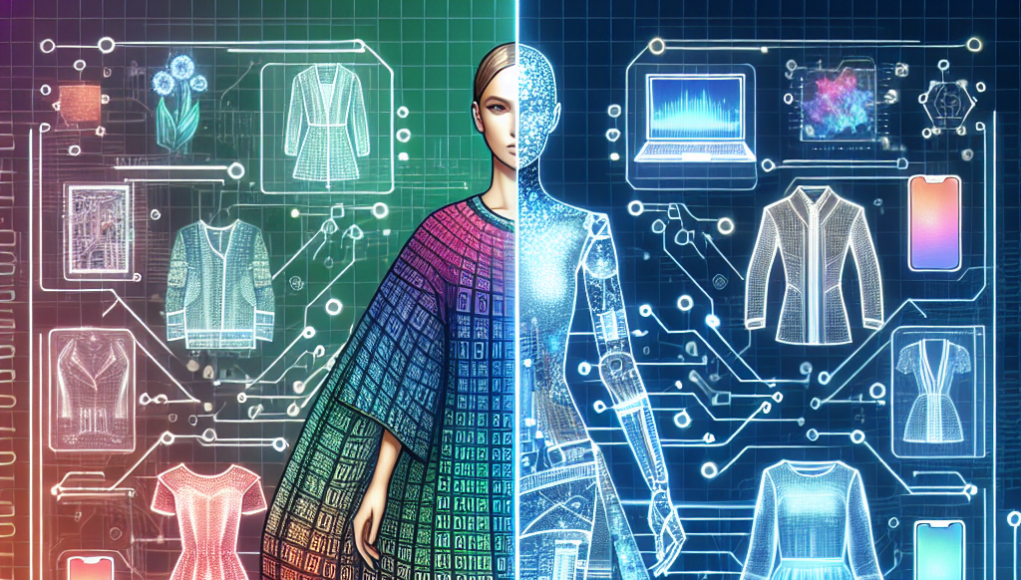Exploring the Rise and Impact of Digital Fashion
In the era where technology and creativity intersect seamlessly, digital fashion emerges as a groundbreaking frontier that is reshaping the sartorial landscape. As a concept that marries fashion with technology, digital fashion is not just a fleeting trend but a transformative force with the potential to redefine how we perceive and interact with clothing. This article delves into the evolution of digital fashion, the key drivers propelling its rise, and its profound impact on the fashion industry.
Understanding the Evolution of Digital Fashion
Digital fashion, at its core, is the creation and use of clothing designed exclusively for a digital environment. This concept, while seemingly futuristic, has been in development for several years. The roots of digital fashion can be traced back to the early 2000s when video games began offering customizable avatars. Over time, these virtual garments evolved from simple pixelated designs to intricate and hyper-realistic outfits, mirroring real-world fashion trends. The evolution signifies a shift in fashion consumption, where digital garments are no longer confined to gaming but are now a medium of self-expression and creativity in virtual spaces.
One of the earliest significant milestones in digital fashion was the introduction of virtual reality (VR) and augmented reality (AR) technologies. These innovations allowed designers to experiment with digital garments in a three-dimensional space, offering consumers an immersive experience. This technological advancement paved the way for virtual fashion shows, where designers could showcase their collections without the constraints of physical limitations. As a result, digital fashion has become a dynamic platform for creativity, where designers can push boundaries without the restrictions of fabric and production costs.
The rise of social media platforms has also played a crucial role in the evolution of digital fashion. With influencers and celebrities frequently showcasing digital garments, there is a growing acceptance and curiosity among consumers. This shift in perception has encouraged more designers and brands to explore the potential of digital fashion, resulting in a proliferation of digital-only collections. The democratization of fashion through digital means has allowed emerging designers to gain visibility and reach audiences without the need for traditional runway shows.
Sustainability concerns in the fashion industry have further accelerated the adoption of digital fashion. As environmental awareness grows, consumers and designers alike are seeking alternatives to the wasteful practices associated with fast fashion. Digital fashion offers a sustainable solution by eliminating the need for physical resources and reducing the carbon footprint associated with garment production and transportation. This environmentally friendly aspect of digital fashion makes it an attractive option for both consumers and brands committed to sustainability.
The evolution of digital fashion has also been influenced by advancements in artificial intelligence and machine learning. These technologies enable designers to create personalized and customizable digital garments, offering a unique shopping experience. AI-powered platforms can analyze consumer preferences and suggest digital outfits that align with individual styles, enhancing customer satisfaction and engagement. This level of personalization is not only revolutionizing the retail experience but also shaping the future of fashion design.
Finally, the proliferation of blockchain technology and non-fungible tokens (NFTs) has opened new avenues for digital fashion. NFTs allow designers to create unique digital garments that can be bought, sold, and traded like physical items, adding an element of exclusivity and value to digital fashion. This evolution has given rise to a new market where digital fashion pieces are not just items of clothing but also valuable assets, blurring the lines between fashion and digital art.
Key Drivers Behind the Digital Fashion Surge
One of the primary drivers behind the surge in digital fashion is the rapid advancement of technology. With the continuous development of powerful graphics software and rendering tools, designers can create hyper-realistic digital garments that rival their physical counterparts. This technological progress has made it possible for digital fashion to achieve a level of detail and sophistication that was once unimaginable, attracting both designers and consumers to this new medium.
The growing influence of gaming culture has also played a significant role in the rise of digital fashion. As gaming becomes a mainstream form of entertainment, the demand for virtual items, including clothing, has skyrocketed. Games like Fortnite and Animal Crossing have popularized the concept of digital fashion by allowing players to customize their avatars with a wide range of outfits. This trend has not only introduced digital fashion to a broader audience but has also established a lucrative market for digital garments.
Social media platforms have been instrumental in driving the popularity of digital fashion. Influencers and celebrities frequently don digital outfits in their posts, showcasing the versatility and creativity of this new fashion form. The viral nature of social media content has accelerated the acceptance and adoption of digital fashion, turning it into a mainstream phenomenon. As more consumers become aware of digital fashion through these platforms, the demand for virtual garments continues to grow.
Another significant driver is the increasing emphasis on sustainability within the fashion industry. As consumers become more environmentally conscious, there is a growing demand for sustainable alternatives to traditional fashion. Digital fashion, with its minimal environmental impact, offers a compelling solution to this challenge. By eliminating the need for physical resources and reducing waste, digital fashion aligns with the values of eco-conscious consumers, driving its adoption among both individuals and brands.
The rise of the metaverse has further fueled the digital fashion surge. As virtual worlds and augmented reality experiences become more prevalent, the demand for digital fashion is expected to soar. In these digital spaces, individuals can express their identity and creativity through virtual clothing, creating a new dimension for fashion consumption. The metaverse offers endless possibilities for digital fashion, from virtual fashion shows to interactive shopping experiences, making it an exciting frontier for both designers and consumers.
Finally, the economic benefits of digital fashion cannot be overlooked. For designers and brands, digital fashion offers a cost-effective alternative to traditional garment production. By eliminating the need for physical materials and manufacturing processes, digital fashion reduces production costs and allows for greater experimentation. Additionally, the digital fashion market presents new revenue streams through the sale of virtual garments and NFTs, providing designers with opportunities to monetize their creations in innovative ways.
Examining Digital Fashion’s Influence on Industry
Digital fashion’s influence on the industry is multifaceted, impacting everything from design processes to consumer behavior. One of the most significant changes is the way designers approach fashion creation. With digital tools, designers can experiment with new silhouettes, textures, and colors without the constraints of physical materials. This freedom has led to a surge in creativity and innovation, as designers can push the boundaries of traditional fashion and explore new possibilities in the digital realm.
The rise of digital fashion has also transformed the fashion show landscape. Virtual fashion shows, once a novelty, have become a viable alternative to traditional runway presentations. These digital events allow designers to reach a global audience without the logistical challenges and costs associated with physical shows. Moreover, virtual fashion shows offer a more inclusive platform, where designers from diverse backgrounds can showcase their work to a wider audience, democratizing the fashion industry.
Consumer behavior is also evolving in response to digital fashion. As virtual garments become more prevalent, consumers are increasingly valuing digital experiences over physical possessions. This shift is evident in the growing popularity of virtual try-ons and augmented reality shopping experiences, where consumers can visualize how digital garments will look on them before making a purchase. This trend is reshaping the retail landscape, as brands must adapt to meet the demands of digitally-savvy consumers.
Digital fashion is also challenging traditional notions of ownership and value. With the advent of NFTs, digital garments can be bought, sold, and owned as unique assets. This development has created a new market for digital fashion, where virtual items are not just clothing but also valuable collectibles. This shift in perception is influencing how consumers view fashion and what they consider to be valuable, prompting brands to explore new ways of creating and marketing digital garments.
The influence of digital fashion extends to the production and supply chain processes as well. By eliminating the need for physical materials and reducing waste, digital fashion offers a more sustainable alternative to traditional garment manufacturing. This shift towards sustainability is encouraging brands to rethink their production methods and prioritize eco-friendly practices. As digital fashion continues to gain traction, it is likely to play a pivotal role in driving the fashion industry towards a more sustainable future.
Finally, digital fashion is fostering collaboration between fashion and technology sectors. As designers and technologists work together to create innovative digital garments, new opportunities for cross-industry partnerships are emerging. These collaborations are driving technological advancements and pushing the boundaries of what is possible in fashion. As a result, digital fashion is not only influencing the industry but also shaping the future of fashion and technology.
In conclusion, the rise of digital fashion is a testament to the transformative power of technology and creativity. As digital fashion continues to evolve, it is reshaping the fashion industry in profound ways, from design and production to consumer behavior and sustainability. While challenges remain, the potential for innovation and growth in digital fashion is immense. As we move towards a more digital and sustainable future, digital fashion is poised to play a pivotal role in defining the next chapter of the fashion industry.










